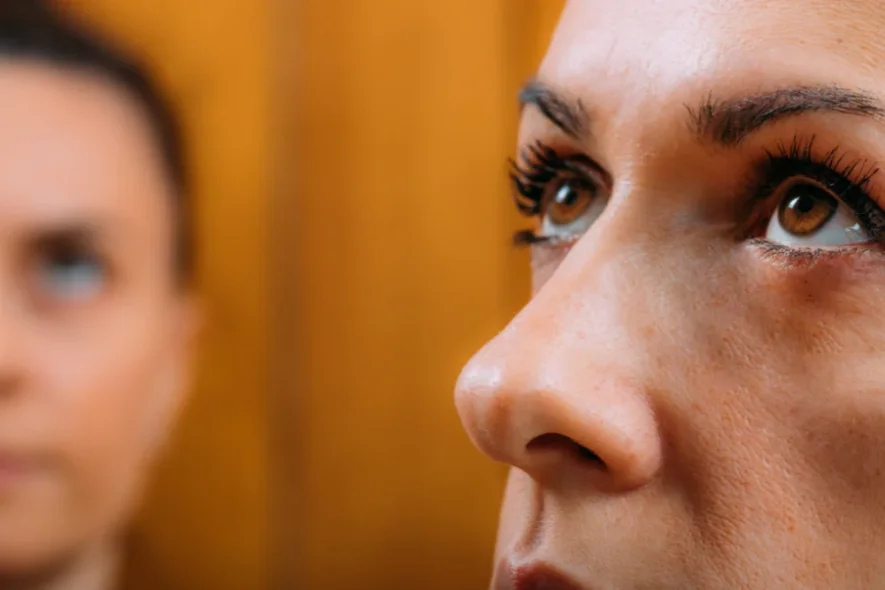Getting ready to explore rehab is a big step, and talking about insurance and costs can feel like hitting a wall. That’s why at Wellbrook Recovery, we work with leading insurance providers to help ensure you get the coverage you need for treatment. Our team guides you through every step of the insurance process, from understanding your benefits to handling authorizations, so you can focus on recovery without the added stress.
Table of Contents
- Key Takeaways: Is Rehab Covered by Insurance?
- Does Insurance Cover Alcohol Rehab and Drug Rehab?
- Essential Health Benefits Under the Affordable Care Act
- Types of Insurance Plans That Provide Rehab Coverage
- Private Health Insurance and Rehab Coverage
- Types of Rehab Services Typically Covered by Insurance
- Rehab Costs: How to Prepare Financially
- Finding Rehab Centers That Accept Your Insurance
- Alternatives When Insurance Doesn’t Cover Rehab
- Key Factors When Choosing a Rehab Facility
- Taking the Next Step Toward Recovery
- Frequently Asked Questions About Insurance and Rehab
Key Takeaways: Is Rehab Covered by Insurance?
- Coverage varies significantly based on your specific plan, with factors such as in-network versus out-of-network providers affecting your out-of-pocket costs.
- Inpatient, outpatient, detoxification, and aftercare services can all be covered, although the extent of coverage depends on your policy.
- If your insurance doesn’t cover rehabilitation or coverage is limited, alternative funding options, such as payment plans and community resources, are available.
- Verifying your specific benefits before starting treatment helps avoid surprise costs.
Does Insurance Cover Alcohol Rehab and Drug Rehab?
The short answer is yes, most insurance plans do cover addiction treatment in some form. But the details matter; rehab insurance coverage differs widely, both among providers and between individual plans within the same company.
Since the Affordable Care Act was passed in 2010, mental health and substance abuse treatment have been classified as essential health benefits. This means insurance companies can’t simply deny coverage for addiction services the way they could before. However, what is covered and how much you’ll pay out of pocket varies significantly depending on your specific plan.
The financial aspect of rehab treatment concerns many families. According to data from SAMHSA, one of the main barriers people report when seeking addiction treatment is uncertainty about insurance coverage and costs. Getting clarity on your coverage before starting treatment removes one major obstacle to getting help.
Essential Health Benefits Under the Affordable Care Act
The ACA has significantly changed addiction treatment coverage. Before 2010, insurance companies could exclude mental health and substance abuse coverage entirely or impose separate, lower coverage limits than they did for physical health conditions.
Now, mental health and substance use disorder services must be included in all marketplace plans and most private insurance. This means:
- Coverage can’t be more restrictive than coverage for physical health conditions
- Annual or lifetime dollar limits can’t apply to mental health and substance abuse benefits
- Cost-sharing requirements must be comparable to those for medical and surgical benefits
The Mental Health Parity and Addiction Equity Act works in conjunction with the ACA to ensure equal treatment and coverage. If your plan covers 30 days of hospital care for a medical condition, it can’t limit mental health or addiction treatment to fewer days or higher co-pays.
Types of Insurance Plans That Provide Rehab Coverage
Different insurance plans approach rehab coverage in different ways. Here’s what each type typically offers:
Private Health Insurance for Recovery
Most private plans purchased through employers or the health insurance marketplace typically include coverage for substance abuse treatment. These plans usually cover both inpatient and outpatient services, though you’ll typically pay less when using in-network providers.
Private insurance plans generally cover:
- Medical detoxification
- Inpatient residential treatment
- Outpatient programs
- Medication-assisted treatment
- Counseling and therapy sessions
Employer-Sponsored Plans and Addiction Care
These plans often provide robust coverage for substance abuse treatment. The specifics depend on what your employer negotiated with the insurance provider, so checking your benefits summary gives you the clearest picture of what’s covered.
Private Health Insurance and Rehab Coverage
Private insurance operates on a network system that affects your costs. In-network providers have contracted rates with your insurance company, resulting in lower out-of-pocket expenses. Out-of-network providers cost more because they haven’t agreed to these negotiated rates.
Common private insurance carriers that cover rehab include Blue Cross Blue Shield, Aetna, Cigna, UnitedHealthcare, and Humana. Each company offers multiple plan types with varying levels of coverage.
Most private plans require:
- A deductible payment before coverage kicks in
- Co-pays for each treatment session or facility visit
- Co-insurance, where you pay a percentage of costs after meeting your deductible
- Pre-authorization for inpatient treatment
Reading through your policy’s Summary of Benefits and Coverage helps you understand these costs upfront. The document spells out your deductible amount, co-pay rates, and out-of-pocket maximum.
Types of Rehab Services Typically Covered by Insurance
Insurance plans generally cover several levels of addiction treatment care:
Inpatient Residential Treatment
This involves staying at a treatment facility for 30, 60, or 90 days. Insurance typically covers medically necessary inpatient care, though plans may limit the number of covered days. Pre-authorization is usually required.
Outpatient Programs
These programs enable patients to live at home while attending treatment sessions several times a week. Most insurance plans cover outpatient care at lower out-of-pocket costs compared to inpatient treatment.
Medical Detoxification
Detox services are widely covered because they’re considered medically necessary. This includes monitoring, medication management, and medical supervision during withdrawal.
Medication-Assisted Treatment
Insurance plans cover FDA-approved medications like methadone, buprenorphine, and naltrexone used to treat opioid and alcohol addiction. These medications get covered under prescription drug benefits.
Aftercare and Continuing Support
Many plans cover ongoing counseling, participation in support groups, and relapse prevention services after completing primary treatment.
Rehab Costs: How to Prepare Financially

The best way to get ready for rehab expenses is to understand all potential costs upfront, including what your insurance covers and what you’ll need to pay. Even with insurance coverage, you’ll likely have some out-of-pocket expenses. Here’s what to expect:
Gearing Up for Insurance Deductibles
This is the amount you pay before insurance starts covering costs. According to the Kaiser Family Foundation, the average annual deductible for employer-sponsored health plans is around $1,735 for single coverage. High-deductible health plans often require a deductible of $6,000 or more before coverage begins.
Anticipating Co-Payments and Co-Insurance
Co-pays are fixed amounts you pay per visit or service. Co-insurance is a percentage of costs you pay after meeting your deductible. For example, 20% co-insurance on a $10,000 treatment program means you pay $2,000.
Reaching Out-of-Pocket Maximums
This is the most you’ll pay in a year. Once you hit this limit, insurance covers 100% of additional covered services. The ACA sets maximum limits on out-of-pocket costs, which for 2024 is $9,450 for individual coverage and $18,900 for family coverage. With some policies, the amount the policy holder paid toward their deductible is also counted toward their out-of-pocket requirement.
Cost Differences Between In-Network and Out-of-Network
Using out-of-network providers allows for many more and often better options, but can result in significantly higher costs. Some plans don’t cover out-of-network care at all, while others require higher deductibles and co-insurance rates. Out-of-network costs may not be included in your out-of-pocket maximum.
Finding Rehab Centers That Accept Your Insurance
Locating a treatment facility that accepts your insurance takes some research, but several strategies help:
- Call Treatment Centers Directly
When you find facilities that look promising, call them to verify they accept your insurance. Ask about their experience working with your specific plan and what services are covered.
- Contact Your Insurance Provider
Call the customer service number on your insurance card. Ask for a list of in-network addiction treatment facilities in your area. Get this information in writing.
- Use Online Provider Directories
Most insurance companies maintain searchable online directories of in-network providers, allowing you to filter by specialty (such as substance abuse treatment) and location to find nearby options.
- Get Pre-Authorization
Before starting treatment, work with the facility to get pre-authorization from your insurance company. This confirms coverage and gives you a clear picture of your out-of-pocket costs.
- Ask About Payment Verification Services
Many rehab centers offer free insurance verification. They’ll contact your insurance company, verify your benefits, and explain what you’ll owe. WellBrook Recovery provides this service to help families understand their coverage before making treatment decisions.
Alternatives When Insurance Doesn’t Cover Rehab
Limited or no insurance coverage doesn’t mean treatment is out of reach. Several alternatives exist:
Payment Plans
Many treatment facilities offer payment plans that spread costs over several months or years. This makes treatment more affordable by avoiding large upfront payments.
Sliding Scale Fees
Some facilities adjust their fees based on income and ability to pay. Community-based treatment centers and nonprofit organizations often employ a sliding-scale pricing model.
State-Funded Treatment Programs
Every state operates publicly funded addiction treatment programs. These programs serve individuals who lack insurance or have limited financial resources. Contact your state’s substance abuse agency to learn about available programs.
Nonprofit and Faith-Based Organizations
Organizations like the Salvation Army operate free or low-cost treatment programs. These programs often include housing, meals, and comprehensive treatment services.
Scholarships and Grants
Some treatment facilities offer scholarships or grants to help cover costs. SAMHSA also provides grant funding that facilities use to subsidize treatment for individuals who can’t afford it.
Personal Loans or Healthcare Credit Cards
While taking on debt isn’t ideal, loans or healthcare-specific credit cards, such as CareCredit, can help cover immediate treatment costs when other options aren’t available.
Key Factors When Choosing a Rehab Facility
Beyond insurance acceptance, these seven factors make all the difference when. selecting a treatment center:

- Accreditation and Licensing
Look for facilities accredited by organizations like The Joint Commission or the Commission on Accreditation of Rehabilitation Facilities (CARF). State licensing ensures facilities meet minimum safety and quality standards.
- Treatment Approach and Philosophy
Different facilities use different treatment models. Some focus on 12-step programs, while others use cognitive-behavioral therapy, holistic approaches, or medication-assisted treatment. The right approach depends on individual needs and preferences.
- Staff Qualifications
Check that the facility employs licensed addiction counselors, therapists, and medical professionals. Staff-to-patient ratios affect the level of individual attention received during treatment.
- Success Rates and Outcomes
While success rates can be difficult to measure consistently, facilities should be willing to discuss their outcomes and how they measure effectiveness.
- Location and Environment
Some people benefit from treatment close to home with family support nearby. Others prefer getting away from their usual environment. Consider what will best support recovery.
If co-occurring mental health conditions exist alongside addiction, the facility should have experience treating both simultaneously.
- Aftercare Planning
Good treatment programs don’t end when residential care is complete. Look for facilities that provide comprehensive aftercare planning and ongoing support.
Taking the Next Step Toward Recovery
Understanding insurance coverage removes one barrier to seeking addiction treatment. While the details can be complex, most people with health insurance have some level of coverage for rehab services.
WellBrook Recovery works with most major insurance providers and can verify your benefits at no cost. Our team helps families understand their coverage and identify the most affordable treatment options. Financial concerns shouldn’t delay getting help for addiction.
Recovery is possible with the right support and treatment. Reaching out to discuss your specific situation and insurance coverage is the first step toward helping your loved one get the care they need.
Frequently Asked Questions About Insurance and Rehab
How do I verify my insurance covers rehab treatment?
Call the customer service number on your insurance card. Ask specifically about substance abuse treatment coverage, including what types of programs are covered, whether pre-authorization is required, and what your out-of-pocket costs will be. Get a reference number for your call.
Does insurance cover treatment for all types of substance abuse?
Most insurance plans cover treatment for alcohol, opioid, and other drug addictions without distinguishing between substances. Coverage is based on medical necessity rather than the specific substance involved.
Can I use my insurance for multiple rehab stays?
Coverage for repeat treatment depends on your specific policy. Many plans don’t limit the number of times you can receive treatment, though they may require new pre-authorization for each admission. The focus is on medical necessity rather than counting episodes.
Will using my insurance for rehab affect my premiums?
Using your health insurance for addiction treatment doesn’t directly increase your premiums. Under HIPAA privacy rules, your insurance company can’t share your treatment information with your employer, and using benefits for mental health or substance abuse treatment can’t result in premium increases based on your health status.
Does pre-existing condition status affect rehab coverage?
The ACA prohibits insurance companies from denying coverage or charging higher premiums based on pre-existing conditions, including addiction. This protection applies to all marketplace plans and most private insurance.
How long does insurance typically cover rehab treatment?
Coverage duration varies by plan and medical necessity. Many plans cover 30-day inpatient programs, with extensions possible if medically necessary. Outpatient treatment coverage can continue for several months or longer, depending on progress and individual needs.
Does insurance cover drug treatment?
Addiction insurance coverage for drug rehab centers differs from plan to plan. Coverage typically includes detoxification, inpatient and outpatient rehab, counseling, and medication-assisted treatments. The extent of coverage depends on the individual’s insurance plan, provider network, and state regulations, with some plans covering full treatment costs while others may require co-pays or limit the duration of care.



























